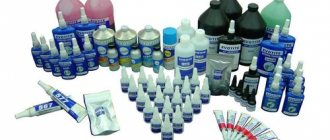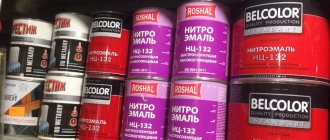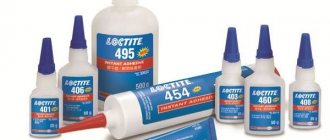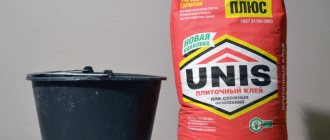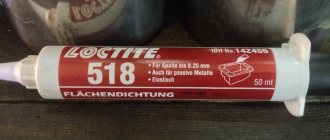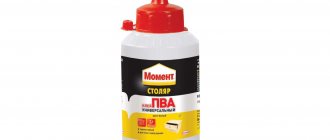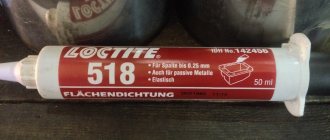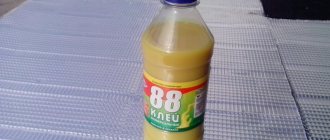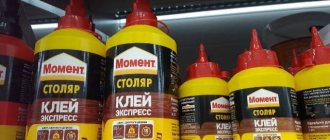For gluing materials of different densities, porosities and sizes, special types of adhesives are required. Therefore, manufacturers of adhesive mixtures are not limited to producing one type of solution. The same can be said about the Loctite brand. Now Loctite glue is a well-known brand; in this article we will analyze its features, types and areas of application.
Typical Applications
In accordance with the manufacturer’s recommendations, adhesive solutions for universal and specialized purposes can be distinguished. Therefore, the scope of application of Loctite brand adhesives is very wide:
- Bonding objects made of rubber, plastic, textiles, cardboard and alloys.
- Fixation of threaded connections.
- Sealing of screw parts.
- Protection of connecting surfaces from corrosion, chemical agents, high pressure, vibration, temperature changes.
- Protection of complex structures from leaks of technical liquids and gases.
- Sealed installation of bushing elements in cylindrical holes, with rigid fixation.
- Repair and installation of metal structures.
- Protection against premature wear of industrial ventilation equipment.
We recommend videos on the topic:
Loctite 638 high strength, universal shaft-sleeve lock 50 ml
Scope of application: Connection of cylindrical units in cases where maximum joint strength at room temperature is required. For gap diameters up to 0.25 mm. Loctite 638 shaft lock prevents self-unscrewing and leakage due to vibration and impact. Used on locking threaded bushings, bushings in housings and shafts.Operating temperature: from -55°C to + 150°C.
Conditions of application: Anaerobe = polymerizes in the absence of air in small gaps between active metal surfaces (or in the presence of loctite7649 activator). For polymerization, 2 factors are required: absence of air + active surface (or loctite7649 activator). For polymerization, a small (up to 0.25 mm) gap between the parts being connected is required (decent thread quality) + an active metal surface, or the liquid loctite7649 activator. Active surfaces include carbon steel, cast iron, brass, bronze, copper.
Chemical Resistance: Testing consisted of curing Loctite 638 at the specified temperatures and then testing it at 22°C.
Excerpt in:
| Holding temperature: | % of original strength, measured through: | |||
| 100 hours | 500 hours | 1000 h | ||
| Engine oil | 125°C | 100 | 100 | 100 |
| Unleaded gasoline | 22°C | 100 | 90 | 85 |
| Brake fluid | 22°C | 100 | 90 | 80 |
| Water/Glycol (50%/50%) | 87°C | 95 | 80 | 80 |
| Ethanol | 22°C | 100 | 100 | 75 |
| Acetone | 22°C | 90 | 90 | 90 |
Loctite 638 is not recommended for use in pure oxygen environments and/or oxygen rich systems.
Loctite 638 should not be selected as a sealant for chlorine and other strong oxidizing agents. Loctite 638 is generally not recommended for use on plastics (especially thermoplastic materials where stress cracking of the plastic may occur). Instructions for use:
- For best results, clean all surfaces (exterior and interior) with detergent and allow to dry.
- If Loctite 638 Bar Joint Retainer is being used on inactive metal or the curing rate is slow, use Loctite 7649 Activator. Let dry.
- To assemble slip fit parts : Apply Loctite 638 shaft-sleeve lock around the front of the sleeve and pin. To achieve more coverage, repeat circular motions throughout the assembly process.
- For press fit parts : Apply Loctite 638 sealant to both parts to be joined and press into place.
- For heat-press fit parts : Apply Loctite 638 to finger. Heat the bushing to create enough clearance for easy assembly.
- Connected parts must not be displaced until sufficient strength has been achieved.
Disassembling the connection Heat the connection to approximately 250 degrees C. Disassemble while hot.
Cleaning Cured Loctite 638 cylindrical joint fixing agent can be removed with a solvent followed by mechanical abrasion with a brush.
Species diversity
The Loctite brand produces not only glue and various adhesive components, but also technical compounds to protect and ensure the functionality of moving mechanisms. The main types of Loctite brand products are:
Loctite screw sealing compounds. These are liquid solutions or tapes for sealing screw connections. They penetrate into the spaces between threaded parts and form an impenetrable layer. Loctite sealant prevents unscrewing of fittings and leakage of technical components. Loctite thread sealants have the following characteristics:
- withstands prolonged exposure to high and low pressure;
- do not crack due to temperature changes;
- have high adhesive properties to metals and plastics;
- are produced in the form of one-component anaerobic, silicone solutions or sealing tape;
- do not shrink, protect against corrosion;
- do not dissolve in oils, gasoline, alkalis.
LKMFLOT
Code: 100969593
Category:
Adhesives
Brand:
Loctite
Packing:
0.01, 0.05, 0.25, 1
Packing:
1
Quick-curing shaft-sleeve retainer Loctite 638 (Loctite)
DESCRIPTION: Loctite 638 is a one-component anaerobic shaft-sleeve lock that polymerizes in the absence of air in small gaps between metal surfaces.
RANGE OF APPLICATION: The product is used for fixing cylindrical parts with a gap of up to 0.25 mm (0.01″), especially where it is necessary to achieve high joint strength at room temperature. Applications include securing bushings and sleeves into housings and onto shafts.
TECHNICAL CHARACTERISTICS: Locktite 638 Color Green Temperature -55 to +150 Fixation time on steel 4 min Gap mm0.25
GENERAL INFORMATION: The product is not recommended for use in environments with pure oxygen, chlorine or other strong oxidizing agents. Information on the safe use of this product is contained in the MSDS. When using special surface cleaning systems, before using the product, it is necessary to check its compatibility with cleaning solutions. In some cases, cleaning solutions may have a negative impact on the properties of the product. The product is not recommended for use on plastics, especially thermoplastics, due to the possibility of their destruction. If such use is necessary, it is necessary to first check the compatibility of the product with the material of the contacting surfaces.
DIRECTIONS FOR USE: To achieve best results, the surfaces to be bonded must be cleaned and degreased. The gap in the mating parts must be completely filled with the product. For slip-fit coupled joints, the product is applied around the pin and the front of the bushing. During assembly, to ensure that the gaps are completely filled with the product, the mating parts must be rotated relative to each other. For press-fit machined parts, the product is applied to both mating parts, which are subsequently pressed into each other. For hot press assemblies, the product is applied to the pin and the bushing is heated to achieve the clearance required for a free assembly. The connected parts must not be subjected to mechanical stress until manual strength is achieved. More detailed information on the use of shaft-sleeve clamps can be obtained from the regional representative office of the company.
STORAGE: The product should be stored in a cool, dry place in closed containers at a temperature of 8 - 28?C (46?F to 82?F) unless otherwise stated on the packaging. The optimal storage temperature is the lower half of the above temperature range. To prevent deterioration of unused product, do not pour it back into the original packaging. More detailed information on storage can be obtained from your local Loctite representative.
NOTE: The data contained is for informational purposes only, but corresponds to the actual properties of the product. Loctite is not responsible for results obtained by other organizations as it has no control over such testing. When using the product, the consumer bears full responsibility for the quality of its operation and labor safety during production processes. When considering warranty cases of products for the production of which the product is used, Loctite does not bear any liability, including moral and other damages associated with the quality of the manufactured product. Loctite recommends that manufacturers, when introducing a product into a technological process, carry out the necessary tests, guided by the above data. The product may be covered by one or more U.S. or other foreign patents or patented uses.
PACKING: 10 ml, 50 ml, 250 ml
Instructions for use
Depending on the purpose, Loctite adhesives and sealants have different recommendations for application and use:
Loctite 243 glue
One-component sealant for sealing threaded connections. Highly resistant to vibration and unscrewing. Available in the form of a spray with an atomizer.
- Before applying to parts, degrease and dry surfaces in advance.
- If there are any corrosion formations, clean them off with an abrasive.
View this post on Instagram
Posted by Full Moon Laboratory (@anicheism) Jul 2, 2022 at 8:30 am PDT
Loctite 243
Can be applied to fittings with a small amount of lubricant.
- Loctite 243 is sprayed at a distance of 7–10 cm directly onto screws, nuts, and self-tapping screws.
- After application, the elements are immediately connected and screwed until it stops.
- If the temperature is below +5˚С, to accelerate polymerization, the fastening elements are additionally treated with Loctite activator.
Scope of application: Connection of cylindrical units in cases where maximum joint strength at room temperature is required. For gap diameters up to 0.25 mm. Loctite 638 shaft lock prevents self-unscrewing and leakage due to vibration and impact. Used on locking threaded bushings, bushings in housings and shafts.
Operating temperature: from -55°C to + 150°C.
Conditions of application: Anaerobe = polymerizes in the absence of air in small gaps between active metal surfaces (or in the presence of an activator). For polymerization, 2 factors are required: absence of air + active surface (or activator). For polymerization, a small (up to 0.25 mm) gap between the parts to be joined is required (decent thread quality) + an active metal surface, or a liquid activator. Active surfaces include carbon steel, cast iron, brass, bronze, copper.
Chemical Resistance: Testing consisted of curing Loctite 638 at the specified temperatures and then testing it at 22°C.
Excerpt in:
| Holding temperature: | % of original strength, measured through: | |||
| 100 hours | 500 hours | 1000 h | ||
| Engine oil | 125°C | 100 | 100 | 100 |
| Unleaded gasoline | 22°C | 100 | 90 | 85 |
| Brake fluid | 22°C | 100 | 90 | 80 |
| Water/Glycol (50%/50%) | 87°C | 95 | 80 | 80 |
| Ethanol | 22°C | 100 | 100 | 75 |
| Acetone | 22°C | 90 | 90 | 90 |
Loctite 638 is not recommended for use in pure oxygen environments and/or oxygen rich systems.
Loctite 638 should not be selected as a sealant for chlorine and other strong oxidizing agents. Loctite 638 is generally not recommended for use on plastics (especially thermoplastic materials where stress cracking of the plastic may occur). Instructions for use:
- For best results, clean all surfaces (exterior and interior) with detergent and allow to dry.
- If Loctite 638 cylindrical joint fixing agent is used on inactive metal or the curing rate is slow, use an activator. Let dry.
- To assemble slip fit parts : Apply Loctite 638 shaft-sleeve lock around the front of the sleeve and pin. To achieve more coverage, repeat circular motions throughout the assembly process.
- For press fit parts : Apply Loctite 638 sealant to both parts to be joined and press into place.
- For heat-press fit parts : Apply Loctite 638 to finger. Heat the bushing to create enough clearance for easy assembly.
- Connected parts must not be displaced until sufficient strength has been achieved.
Disassembling the connection Heat the connection to approximately 250 degrees C. Disassemble while hot.
Cleaning Cured Loctite 638 cylindrical joint fixing agent can be removed with a solvent followed by mechanical abrasion with a brush.
general information
The product is not recommended for use in environments with pure oxygen, chlorine or other strong oxidizing agents.
When using special surface cleaning systems, before using the product, it is necessary to check its compatibility with cleaning solutions. In some cases, cleaning solutions may have a negative impact on the properties of the product. The product is not recommended for use on plastics, especially thermoplastics, due to the possibility of their destruction. If such use is necessary, it is necessary to first check the compatibility of the product with the material of the contacting surfaces.
